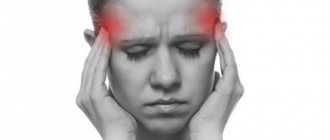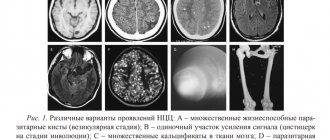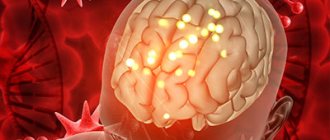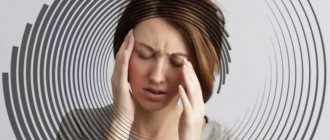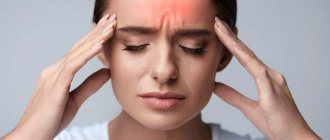The painful condition is unpleasant for any person. In psychology, there is a separate area called phobia of fear of pain. Most people try to avoid unpleasant sensations in the body. However, in some individuals, the natural fear of pain, which serves as a natural protective mechanism, can develop into pathology.
Fear of pain makes you refuse a routine examination
What is algophobia
The name is derived from the ancient Greek words ἄλγος, meaning "pain", and φόβος, meaning "fear". Algophobia is a panicky fear of pain. In some sources you can read that algophobia is a fear of cold. In fact, the fear of cold is called cryophobia.
Algophobe suffers from irrational anxiety and cannot get rid of it. A person avoids situations in which he is likely or potentially likely to experience even the slightest pain. Each patient has his own list of situations, types of activity, objects and objects that are perceived as dangerous.
Examples of threatening objects and conditions:
- street (fight, dog attack, sprained leg, accident, etc.);
- extreme sports;
- cooking (knives, other objects that can hurt you);
- construction and any repair work;
- public places and public celebrations;
- competitions;
- much more.
Some are afraid of getting sick and experiencing pain, others are afraid of pain during death or during sex. Others are tormented by the thought: “How to give birth without fear and pain.” Some people only experience fear of toothache. And someone does not care about physical pain, but is tormented by the fear of the pain of life, suffering, despair, disappointment, etc. Often the fear of moral pain triggers the emergence of other fears. For example, some women are afraid of divorce due to fear of mental pain. And some are even afraid not to feel pain, but to cause pain to another.
Essentially, an algophobe is afraid of the whole world. It's no joke, because you never know that your tooth will hurt, or that you will step on something hard and sharp. In dangerous situations, panic attacks occur; at these moments a person is not at all aware of his actions, afraid of dying or going crazy.
It is important! Due to the specifics of algophobia, it can be confused with another fear, for example, with oxyphobia - fear of sharp objects. Or with a fear of heights, doctors, etc. In women, this can be confused with tokophobia - the fear of childbirth.
Causes of fear of pain
Most often, algophobia develops against the background of personal psychological trauma, that is, a person is tormented by memories of pain due to a blow, burn, fracture or other physical injury. Or the algophobe saw someone suffering from pain, becoming angry and irritable due to illness. In this case, there may still be an irrational feeling of guilt. One way or another, a traumatic shock can happen in childhood or in adulthood.
The second version of psychotrauma is systematic exposure to a stress factor. For example, a fear of pain may develop in a person who was often beaten and punished by parents or other people. In most cases, this refers to childhood memories, but this can also happen in adult life (captivity, torture, mobbing).
Other causes of fear of pain:
- low pain threshold as a feature of the body;
- presence of chronic diseases;
- sadomasochistic tendencies (Freud's theory of repression of forbidden desires);
- an attitude towards self-destruction and dissatisfaction with life (protective fear that a person will not do anything to himself);
- aggressiveness and asocial orientation of the individual (fear restrains destructive impulses, the person is afraid of punishment).
Algophobia is often combined with other fears, for example, fear of death. Or the fear of pain has a more specific manifestation, for example, a person is worried not by the fact of pain itself, but by the fear that it will not stop, or that he will remain disabled and will be in a humiliating position.
This is interesting! Psychologists note that modern people are more afraid of pain than our ancestors. The thing is that the current generation is accustomed to comfort and convenience, so at the slightest hint of pain they run to the pharmacy or hospital.
Description and mechanism of development
Fear is a natural human reaction to danger. Therefore, people may be afraid not only of serious operations, but also of painless procedures.
Those who suffer from algophobia at first simply become anxious and worried. Those whose disease has begun to progress begin to experience autonomic disorders that require the intervention of a psychotherapist.
As the disease develops, it changes a person’s behavior. He becomes suspicious, withdrawn, and considers every situation from the position of receiving a painful blow. Those moments where he experienced acute pain, he diligently avoids and strives never to repeat.
Additional Information. Doctors spoke about interesting observations of patients suffering from alginophobia. It turns out that a person is afraid not only of pain, but more of the fact that unpleasant emotions will never leave him. Also, the individual often worries that he will lose control of himself; for him, as for many people, this is unacceptable. In some cases, a person is worried that he will be considered weak, helpless, thereby being humiliated and ridiculed.
Signs and symptoms of fear of pain
The main symptom of algophobia is irrational anxiety in front of potentially dangerous situations and avoidance of them. For example, algophobes put off visiting a dentist or other doctor until the last minute. If an algophobe nevertheless finds himself in a frightening situation, then he is seized with panic.
During a panic attack, somatic deterioration is noticeable:
- tremor;
- shiver;
- chills;
- tachycardia;
- arrhythmia;
- cephalgia;
- chest pain;
- breathing problems;
- sweating;
- nausea;
- dry mouth;
- presyncope and fainting.
All this further worsens a person’s mental state, because he understands that in these seconds he is closer than ever to what he is afraid of – pain.
Diagnosis of phobia fear of pain
As we have already said, algophobia can be confused with other fears, and it is often combined with other phobias. This makes diagnosis difficult and makes self-diagnosis impossible. There are no special, officially accepted tests for identifying algophobia.
To make a diagnosis, you need to see a psychotherapist. The specialist collects anamnesis, assesses the patient’s condition from his words and based on the results of his observation. It is important to establish that the issue is precisely fear, that there is no connection to individual conditions or a group of objects.
General procedure for the operation
Removing the hymen is a simple operation and takes no more than 10-15 minutes. Having placed the girl on the gynecological chair, the doctor gives her local anesthesia (less commonly, full anesthesia is used), after which he excises the hymen partially or completely. Then the edges of the wound are coagulated and treated with antiseptic agents.
Usually, after surgical defloration, patients are advised to rest for 1-2 hours in the hospital, and then avoid sexual intercourse for seven days, but if the operation was performed with the Surgitron device, then a recovery period is not required.
Treatment of fear of pain
From a therapeutic point of view, this is one of the most difficult phobias. The reasons for the fear of pain are not always on the surface; sometimes we are talking about hidden, complex psychological preconditions. This is important to consider when choosing treatment. For example, if the issue is sadomasochistic tendencies, a subconscious desire to experience or cause pain, then you need to understand the nature of these tendencies and fight it. Then the fear of pain will go away on its own over time, because the person realizes that he is in control of the situation.
In general, psychotherapy methods are used to treat algophobia: cognitive behavioral psychotherapy, NLP, hypnosis, systematic desensitization method, psychoanalysis, art therapy and others. In most cases, medication is indicated: sedatives, antidepressants. Read more about this in another article.
Note! Autogenic training helps well as self-help for fear of pain.
How to get rid of the fear of physical pain yourself
How to overcome and overcome the fear of physical pain? How not to be afraid of pain? You need to convince yourself that in everyday life it is extremely difficult to get such a portion of pain that you cannot withstand. Yes, it is very unpleasant, but you will not die if you hit your foot or hand.
If you are tormented by fear of pain during childbirth, it is important to remember that proper breathing and anesthesia can subside unwanted reactions. If you have a toothache or headache, you can also take a tablet. Of course, medications are an emergency measure. It is better to find a somatic or psychological cause of physical pain and direct your efforts to get rid of the root cause.
It is also important to remember that the physical reaction to the impact lasts only a few seconds, the emotional reaction lasts a maximum of 15 minutes. The rest of the time, people themselves “increase” the pain. That is, you decide for yourself whether to feel pain or not. By the way, the same rule is true for emotional pain, but we will analyze it separately.
How to get rid of the fear of mental pain yourself
How to overcome and overcome the fear of moral pain? Make friends with pain. Just as physical pain protects against something and warns you, mental pain indicates a current problem or helps you realize what is really important to you. Pain helps you prioritize.
Maybe you choose the wrong people or are too touchy. Maybe you yourself provoke people into conflicts, etc. Examine your pain and find what you really need to deal with. Pain is not an enemy, it is a friend, a guide.
How to get rid of the fear of hurting someone yourself
How to overcome and overcome the fear of hurting someone physically or mentally? You need to convince yourself that you cannot control other people's reactions and you cannot predict events. That is, you cannot know that some words will offend another person, you cannot sacrifice yourself to satisfy other people’s needs (for example, stay in a relationship, afraid of hurting someone else by breaking up).
If you are afraid of causing pain due to outbursts of aggression, terrible obsessive thoughts or something similar, then you should consult a psychologist. In any case, it is important to work with the root cause. You must analyze and understand what is hidden behind the fear of hurting another in your case. You also need to analyze the fear for validity. Why did you even decide that you could hurt someone? Has this already happened? Was this really your fault?
How to overcome alginophobia
Psychotherapy is used to treat phobias. In advanced stages, it is supplemented with drug treatment. Depending on the case, antidepressants, tranquilizers, and sedatives are prescribed. Among the methods of psychotherapy, autogenic training, hypnosis, and NLP are popular.
How to overcome the fear of pain: autogenic training method
Autotraining is based on self-hypnosis. A person fights anxiety and fear with the help of persuasion. Autogenic training helps regulate the psycho-emotional state, relieves fatigue and tension. But to achieve lasting results, you need to do the exercises daily for 1.5–2 months.
For greater effect, it is recommended to perform the exercise three times a day: after waking up, during the day and before bed. First you need to physically relax. The total duration of classes is half an hour a day.
Autogenic training techniques
How to get rid of the fear of pain with the help of auto-training:
- retire;
- create a cozy environment around you;
- lie on your back;
- straighten your arms freely at your sides;
- close your eyes;
- relax, try to concentrate on your feelings.
Feel the warmth throughout your body. Now repeat the following settings:
- I am absolutely relaxed and calm.
- My body is relaxed, warmth flows through it.
- My hands are relaxed, they are getting heavy.
- My legs are relaxed, they feel heavy.
- My thoughts are clear and positive.
- My circulation is good, the blood spreads joy throughout my body.
- It's easy and comfortable for me to live.
- I live in harmony with the environment.
- I can find a way out of any situation.
- I feel great and am ready to take on various tasks.
- I'm not afraid of pain.
You can make your own list of statements for auto-training. As you already understood, they should speak in the present tense in the first person about what you are missing.
Getting rid of a phobia on your own
Self-treatment is effective only at the early stages of phobia development. To heal, you need to analyze your fear. Go back to the point where we discussed deep-seated fears and think about what you are really afraid of. After this, make a correction plan to get rid of fear or re-read our recommendations. Focus on rationalization, look for evidence that your fear is far-fetched and non-existent.
How to stop feeling physical pain during an acute attack: distract yourself with something pleasant. Try to focus on the pain rather than anything else.
What to do if your child is afraid of pain:
- If a child is hurt, remain calm and explain your actions when treating wounds. Children copy the state and behavior of adults. Don't panic.
- Don't focus on your child's feelings, try to distract him. Find out how it happened and explain how it can be avoided in the future.
- Do not yell at your child, do not scold or punish him for bruises and tears.
- Together with your child, watch a film or cartoon where the hero endures pain. Or you can show this by personal example.
- Enroll your child in a sports section. First make sure that the trainer is professional and regularly inquire about the child’s condition.
Self-help will only be effective at the early stages of the phobia. In other cases, it is recommended to visit a psychologist.
Yoga
Yoga helps to understand the connection between soul and body. According to one theory, pain lives only in our heads. Fear and other emotions live there too. If a person learns to control his thoughts, then his bodily sensations will change. He will be able to overcome his fear, as he will be confident that he can control his body and mind. In addition, yoga restores the body's energy balance.
It is important! Yoga is more of an auxiliary method of treatment than the main one.
Psychotherapy
When treating phobias, it is not recommended to self-medicate. It is better to immediately contact a psychotherapist. He will determine the cause and select an individual course of psychotherapy. Typically, cognitive behavioral therapy or hypnosis is used. If the course of the disease is complicated by panic attacks, depression or other disorders, the psychotherapist prescribes medications.
Why is fear of pain dangerous?
Obsessive thoughts, panic fear and anxiety, somatic manifestations of fear interfere with leading a normal life and interfere with the socialization of the individual. Algophobe loses work, friends, entertainment. Algophobia is one of those phobias whose object is always nearby. After all, even at home a person does not feel safe: you can accidentally hit or stumble. Yes, of course, you can cover the walls of the house and the floor with soft fabric, take out all the furniture, etc., but this still will not save you from anxiety.
The situation is aggravated by the fact that psychological stress leads to real somatic deterioration, including pain. In addition to somatic diseases, secondary mental disorders, such as depression, develop due to stress. Without treatment, this can transform into suicidal tendencies.
